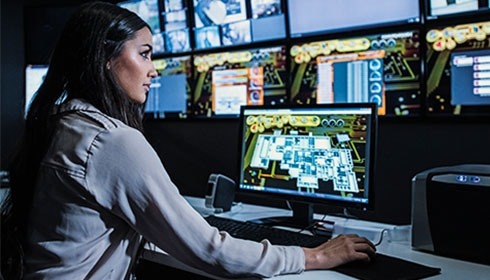Buildings of the Future to transform industry leveraging Schneider Electric’s all-digital and all-electric approach

Schneider Electric, a leader in the digital transformation of energy management and automation, is introducing its Buildings of the Future framework to leverage the all-digital, all electric world for more sustainable, resilient, hyper-efficient and people-centric buildings. Profiled as part of Schneider Electric’s Innovation Summit in early November, the Buildings of the Future initiative will help the industry meet environmental and business requirements, as well as occupant expectations.
“There are both old and new necessities that are changing the way the world thinks about buildings,” said Laurent Bataille, Executive Vice President for the Digital Energy Division at Schneider Electric. “With the right design approach and the deployment of new digital technologies, we can meet the needs of the planet, investors, developers and building occupants without making tradeoffs. Buildings play a crucial role in both our economic and environmental health, and there’s a critical need to adapt industry practices for existing and new buildings.”

Build a sustainable future
Environmental and business challenges are forcing the building industry to examine the role buildings play in carbon emissions and costly waste. Buildings consume about 30% of the world’s energy according to the IEA, via their construction and operations, and account for almost 40% of annual global greenhouse gas emissions. But there are new technologies that can begin to reverse these statistics.
For example, there are over 30 million units of medium-voltage (MV) switchgear installed worldwide using sulfur hexafluoride (SF6), a potent greenhouse gas. Under the Green Premium Program, Schneider Electric has developed MV switchgear that uses pure air instead of SF6 gas to provide buildings with a boost in sustainability and safety. New technologies and the all-digital and all electric Buildings of the Future framework will help the world win the fight against climate change.
Build resiliency
The need for resilient buildings has never been greater. Building owners and facility managers in critical facilities and commercial buildings are tasked with keeping operations running smoothly and delivering a superior occupant experience. In a Covid-19 environment, the bigger challenge is to continuously adapt to new obstacles during times of crisis that can impact the continuity of operations, quickly change business priorities, alter staffing levels, and lower operating budgets. New capabilities can greatly enhance the resilience of buildings. For example, EcoStruxure Power digitizes the electrical infrastructure to deliver reliability, increase uptime, and stabilize networks with harmonics control, uninterruptible power supplies and mitigation solutions. The Connected Room Solution modernizes and future-proofs the building’s infrastructure by easily repurposing space and scaling up or down throughout a building’s lifecycle. Both solutions improve resilience and a building’s ability to adapt, grow and evolve.
Benefit from a hyper-efficient building
Buildings need to be hyper-efficient from the design and build process to the operations and maintenance phases of their lifecycle. It starts in the early stages with RIB Software. Project stakeholders are empowered with real-time, cloud-based collaboration for enterprise wide projects throughout the construction lifecycle from design, QTO & estimation, scheduling, bidding and tendering, and modular construction, to finance control integrated with corporate ERP.
Once a building is operational, all systems within a building, including the electrical distribution and HVAC systems, will need to be flexible enough to react to complex sets of conditions and enable analysis between opportunities and risks. This risk/reward calculation can only happen if the building operator has enough data and granular levels of control to be able to continually rebalance and optimize the way the building operates in response to those conditions. The EcoStruxure Building open innovation platform offers solutions that integrate power distribution and management, building automation, and IT systems to capture and analyze data for better informed decisions and higher levels of efficiency.
Drive productivity with a people-centric building
The world population is spending most of their time indoors. In fact, it is estimated that we will spend close to 90% of our lives inside. With this, buildings are at the epicenter for the air we breathe and the people in which we interact. Expectations for building services, driven by purpose and culture, continues to rise among employees, patients, students and guests. For these reasons, people-centricity, and subsequently health and wellness, are becoming the differentiator for building owners, operators, and tenants. Schneider Electric provides differentiators such as EcoStruxure Workplace Advisor and the Engage Enterprise App, both of which create digital building environments that improve comfort and optimize space. EcoStruxure Building Advisor, a suite of analytic monitoring services, can help monitor your HVAC systems and help ensure air is flowing properly.
To learn more about the Buildings of the Future initiative, visit the Buildings of the Future website.
